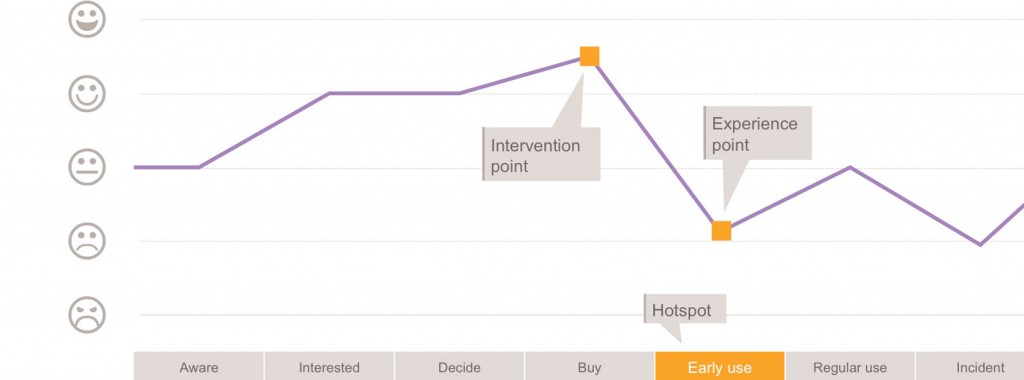Delivering a good customer experience is often more effective in building a competitive advantage than optimising internal processes. Companies shifting their investment from customer management to customer experience. Organisations that recognise this opportunity usually face two challenges: Who is our customer? Where should we start?
Many attempts to be more customer-centric miss the mark
For years companies have been trying to be more customer-centric. Millions have been spent analysing big data in an attempt just to understand customers. Many hours have been spent engaging customers through social media. Countless meetings were held in designing voice of the customer programmes to include customers in decision making processes. The truth is, despite the colourful show, understanding customers is still an elusive business.
Do not focus on that customer
Every customer has a story. Alongside each story there is a different reason to buy or use a product or service. While it is possible to assess individual experiences, it is also very expensive to act on them. A far more effective strategy is to understand what the most of your customers experiences have in common. Addressing common issues makes economic sense.

It is important to understand the tradeoff between a customer experience that is a source of revenue and one that offers a competitive advantage.
Identify customer experience ‘hotspots’
A ‘hotspot’ is identified when customers are consistently not having a positive experience during a particular interaction with the organisation. Business are usually aware of their customer experience hotspots, or can easily point them out.
Poor handovers from sales to after-sales or overly complex instructions tend to lead to preventable incidents. The customers response to these events ranges from mild irritation to logging an issue or complaint.

First identify the hotspot, then decided on the most relevant experience point and find the intervention point
Change a hotspot experience
Identifying hotspots is one thing. Knowing where and how to intervene to change a hotspot experience is something else.Often the phase in the customer lifecycle during which the customer experiences an issue, is not the point where irritation could have been prevented.
Many negative experiences can be prevented. Providing customers the information of what to do next, or better yet, setting them up to use a complex service, can make a real difference!
The prevention intervention
Organisations tend to fix and solve problems that seem to be the cause of the experience hotspots. Solving an issue does not necessarily have a positive impact on the overall customer experience. Designing interventions that prevent a particular situation from happening can eradicate one or more hotspots. More importantly, prevention can significantly improve the customer experience.
A customer is 4 times more likely to go to a competitor if the problem is service related than price or product related
Impact the customer experience
Customers cannot, not have an experience. Customers will have an experience with your organisation, product or service – regardless of the level of engagement provided by the organisation. Organisations can significantly impact the overall customer experience by taking a more holistic view. More often than not, small interventions can significantly improve the customers’ experience.
For more customer experience: http://liveworkstudio.com/themes/customer-experience/



